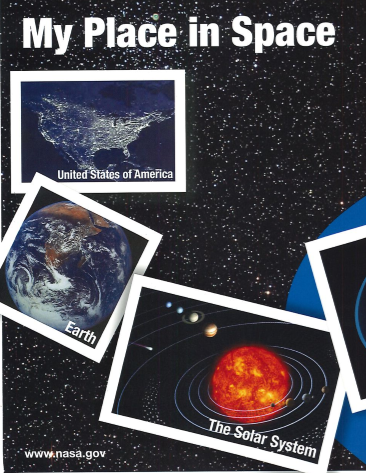At Home for Earth Day: Make a Water Filter
Use common materials from your home and yard to make a basic water filter, and watch it work on muddy water!
Filtration is the process of separating solids from fluids using a a filter—a medium that only the fluid can pass through, leaving the solids “trapped” behind. Natural and human-made filters are all around us: paper filters keep coffee grounds out of freshly brewed coffee; HEPA filters capture dust particles in our vacuum cleaners; our kidneys even act as filters to remove harmful materials from our blood! In nature, dirt is naturally filtered out of water as the water moves through sand, soil, gravel. This is the process that we will be demonstrating today.
At Home for Earth Day: Model the Earth's Layers
Use modeling clay to create a simple model of the Earth’s layered structure!
At Home for Earth Day: Plastic Bottle Terrarium
A terrarium is an enclosed environment created for plants, which needs very little outside intervention once it is set up. In celebration of Earth Day, let’s create a basic terrarium from an upcycled 2-liter plastic bottle. When it is complete, our plant will receive sunlight through the transparent walls of the bottle, and it will obtain water from its own water cycle!
50th Anniversary Earth Day Extravaganza!
Since 1970, communities and activists have celebrated Earth Day on April 22. On this day, people all over the world show their support for environmental protection, advocating and working to make our planet a cleaner and healthier place for all of us. This year, for the 50th anniversary of Earth Day, the theme is climate change.
The Earth Day Network offers many opportunities the join and follow the global movement for environmentalism. For something closer to home, the Discovery Center will be posting crafts, resources, activities throughout the day, with the aim of learning about—and appreciating the beauty in—our very own home planet. We hope you’ll celebrate with us!
At-Home STEM Activities: Ice Cube Race
Learn how different colors interact with heat in this simple solar-powered activity!
This activity is geared toward elementary-level learners, but can easily scale up or down depending on existing science knowledge. Younger children may appreciate performing the experiment with less emphasis on the background and concluding information, while older students may choose to supplement this lesson with in-depth research on wavelengths and energy.
At-Home STEM Activities: Make Your Own Sundial
Tell time with nothing more than the sun and a few household objects!
This sunny-day activity is geared toward elementary and middle-school learners: it requires an ability to read time and to find magnetic north with a compass (with or without assistance).
At-Home STEM Activities: Make Your Own Bouncy Ball
Make your own bouncy ball with this easy at-home recipe
A fun all-ages activity, with adult supervision required for younger learners (mess potential!)
Virtual Science Demonstration: Exploring Invisibility
Join one of our educators for an at-home science demonstration about invisibility!
Space Crafts: Comet on a Stick
Make your own celestial “dirty snowball” with common household materials!
a simple all-ages activity
Distance Learning Module: Core Samples
Rock and soil samples reveal a lot about the chemistry, physical structure, and ability to support life on a planet, moon, or asteroid.
Can you complete this engineering challenge to design a device that takes core samples of a potato “asteroid”? This activity is geared toward upper-elementary and middle-school students.
At-Home STEM Activities: Space Goo with Optional Egg-Drop
Can you make Space Goo strong enough to protect an egg? Find out with this simple at-home activity! Hands-on fun for all ages, with adult supervision (mess potential!)
Virtual Science Demonstration: Atmospheric Pressure
Join one of our educators for a series of at-home science demonstrations on atmospheric pressure!
Just for Fun: Interstellar Postcard
Have you ever traveled far away from home? Did you send a postcard to your friends or family to share the experience with them? Let your imagination take you on a trip faaaaar from Earth, at the very boundaries of our solar system—what might THAT postcard look like?!
Open-ended all-ages activity, courtesy of NASA.
Distance Learning Module: Weather, Weather Everywhere: Part II (Other Planets)
Weather: it’s more than just a conversation-starter.
What causes weather, how do we study it, and what is the weather like on other planets? Learn all about it in today’s lesson, geared toward middle-school learners! Part 2 of 2.
At-Home STEM Activities: Domino Computer
Computers work by adding binary numbers using circuits of logic gates. In this module, learn about some of the most common types of logic gates, and model them by building circuits out of dominoes.
This module is geared toward upper-middle and high school students.
Distance Learning Module: Weather, Weather Everywhere: Part I (Earth)
Weather: it’s more than just a conversation-starter.
What causes weather, how do we study it, and what is the weather like on other planets? Learn all about it in today’s lesson, geared toward middle-school learners!
At-Home STEM Activities: Make a Rain Gauge
Turn April showers into an opportunity for at-home science! In this all-ages activity, learn how to track rainfall using a simple homemade rain gauge.
Adult supervision required—sharp objects utilized in one step.
At-Home STEM Activities: Paper Mountains
Create your own world of mountains and valleys, and watch the effects of a rainstorm!
Appropriate for pre-k and up, with supervision (mess potential!)
Just for Fun: Paper Shuttle Glider
Assemble and test your own space shuttle glider with this at-home project from NASA!
Distance Learning Module: Getting Started with Binary Code
In this introduction to coding, learn how computers store information in numerical format and test your skills at reading & writing in binary!
Geared toward upper elementary through middle school learners.


















